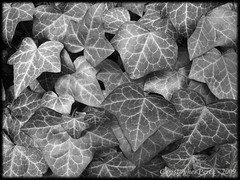My explorations included a deep look into multiple exposure high dynamic range with tone mapping. The results of that learning led to the LensWork publication of a 35 image portfolio title In The Rail Yard. I continue to be thrilled by the results.
Another exploration has been to capture waterfowl in flight. The latest tools offer capabilities I only dreamed of back when I shot film. So image capture has been much easier. This has freed me to work on lighting and location. Much of that work has been posted on my Flickr pages and continues to receive positive feedback from around the world.
Just below this posting you can see yet another exploration. I am now learning about digital cinema. The process of thinking through scenes and scripts and staging and lighting brings back experiences I had thirty years ago when I worked as a still photographer on a small number of AFI projects down in Los Angeles.
Imagine my surprise when I came upon an image that nearly knocked my eyeballs out of their sockets. I haven't dealt in straight image capture for years and yet here was something completely unexpected; a beautiful image coming very nearly straight out of the camera.
My daily life usually sees me carrying a small Canon G10 point and shoot camera. I use it to "sketch" ideas and to try and capture fleeting moments where a DSLR or film camera might be cumbersome. Recently my wife and I were walking up the street after buying a few loaves of bread. I happened to look down and spied a rather nice grouping of ivy leaves. Out came the camera and within seconds I had four or five images to work from.

Much later (like two weeks later) I browsed my image files to see if there might be something worth processing. I rendered a few images in color and then switched to applying a quad-tone tint. As I de-saturated the image my mouth dropped open. The effect impressed me beyond my imagination.
I watch the video linked to from this blog about James Ravilious. He liked uncoated pre-war optics for the way they opened the shadow areas and gave the highlight regions a beautiful creamy effect. That's one of the things about coming from 40+ years of tradition film photography. I'm able to take a moment and think about what actually happens when something like an un-coated optic is used to make an image. I can then attempt to re-create the effect using my current digital tools.
In the case of this image, I knew the shadow areas would've been open and quite details if shot with an uncoated Leica M39 lens. I also knew that the highlight areas would've either been "blown out" or rendered just on the edge of detail. Working the curves to achieve that effect on the file I was working with was quick, easy, and straight-forward.
There was a nice print in here just waiting for me to press the button.
Out came Hanemuhle's latest photo rag smooth (from their new factory in France).
Down came the special feed tray on the HP B9180 printer.
Press went the print button on the computer.
Out came what may very well be one of the finest prints I have ever made.
The highlights are perfectly placed. The shadow areas are gorgeous. The edges of the leaves returned an incredible micro-contrast in the way they overlay each other. The edges of the frame gave the effect that this was shot with an old Leica III-series film camera. The entire effect is one of incredible luminosity and brilliance.
This one is a "keeper".
No comments:
Post a Comment